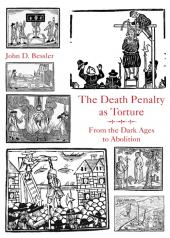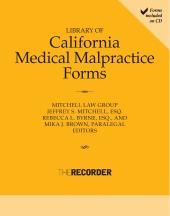The Death Penalty as Torture: From the Dark Ages to Abolition
Select subscription type
Terms & conditions
Subscribers receive the product(s) listed on the Order Form and any Updates made available during the annual subscription period. Shipping and handling fees are not included in the annual price.
Subscribers are advised of the number of Updates that were made to the particular publication the prior year. The number of Updates may vary due to developments in the law and other publishing issues, but subscribers may use this as a rough estimate of future shipments. Subscribers may call Customer Support at 800-833-9844 for additional information.
Subscribers may cancel this subscription by: calling Customer Support at 800-833-9844; emailing customer.support@lexisnexis.com; or returning the invoice marked "CANCEL".
If subscribers cancel within 30 days after the product is ordered or received and return the product at their expense, then they will receive a full credit of the price for the annual subscription.
If subscribers cancel between 31 and 60 days after the invoice date and return the product at their expense, then they will receive a 5/6th credit of the price for the annual subscription. No credit will be given for cancellations more than 60 days after the invoice date. To receive any credit, subscriber must return all product(s) shipped during the year at their expense within the applicable cancellation period listed above.
Subscribers receive the product(s) listed on the Order Form and any Updates made available during the annual subscription period. Shipping and handling fees are not included in the annual price.
Subscribers are advised of the number of Updates that were made to the particular publication the prior year. The number of Updates may vary due to developments in the law and other publishing issues, but subscribers may use this as a rough estimate of future shipments. Subscribers may call Customer Support at 800-833-9844 for additional information.
Subscribers may cancel this subscription by: calling Customer Support at 800-833-9844; emailing customer.support@lexisnexis.com; or returning the invoice marked 'CANCEL'.
If subscribers cancel within 30 days after the product is ordered or received and return the product at their expense, then they will receive a full credit of the price for the annual subscription.
If subscribers cancel between 31 and 60 days after the invoice date and return the product at their expense, then they will receive a 5/6th credit of the price for the annual subscription. No credit will be given for cancellations more than 60 days after the invoice date. To receive any credit, subscriber must return all product(s) shipped during the year at their expense within the applicable cancellation period listed above.
Product description
View a sample of this title using the ReadNow feature
During the Dark Ages and the Renaissance, Europe’s monarchs often resorted to torture and executions. The pain inflicted by instruments of torture—from the thumbscrew and the rack to the Inquisition’s tools of torment—was eclipsed only by horrific methods of execution, from breaking on the wheel and crucifixion to drawing and quartering and burning at the stake. The English “Bloody Code” made more than 200 crimes punishable by death, and judicial torture—expressly authorized by law and used to extract confessions—permeated continental European legal systems. Judges regularly imposed death sentences and other harsh corporal punishments, from the stocks and the pillory, to branding and ear cropping, to lashes at public whipping posts.
In the Enlightenment, jurists and writers questioned the efficacy of torture and capital punishment. In 1764, the Italian philosopher Cesare Beccaria—the father of the world’s anti–death penalty movement—condemned both practices. And Montesquieu, like Beccaria and others, concluded that any punishment that goes beyond absolute necessity is tyrannical. Traditionally, torture and executions have been viewed in separate legal silos, with countries renouncing acts of torture while simultaneously using capital punishment. The UN Convention Against Torture strictly prohibits physical or psychological torture; not even war or threat of war can be invoked to justify it. But under the guise of “lawful sanctions,” some countries continue to carry out executions even though they bear the indicia of torture.
In The Death Penalty as Torture, Prof. John Bessler argues that death sentences and executions are medieval relics. In a world in which “mock” or simulated executions, as well as a host of other non-lethal acts, are already considered to be torturous, he contends that death sentences and executions should be classified under the rubric of torture. Unlike in the Middle Ages, penitentiaries—one of the products of the Enlightenment—now exist throughout the globe to house violent offenders. With the rise of life without parole sentences, and with more than four of five nations no longer using executions, The Death Penalty as Torture calls for the recognition of a peremptory, international law norm against the death penalty’s use.
epub is protected by Adobe DRM.
eBooks, CDs, downloadable content, and software purchases are noncancelable, nonrefundable and nonreturnable. Click here for more information about LexisNexis eBooks. The eBook versions of this title may feature links to Lexis+® for further legal research options. A valid subscription to Lexis+® is required to access this content.
 Lexis Nexis
Lexis Nexis 



